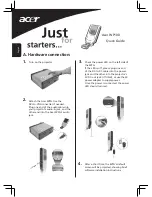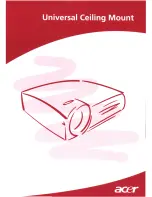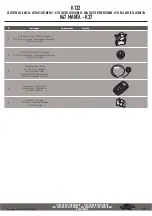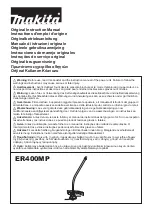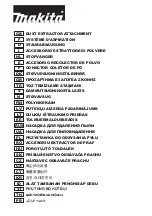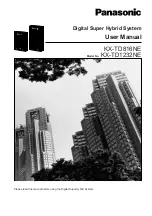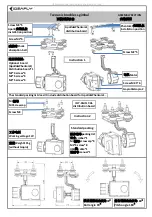
en
Figures and texts of this book are protected by COPYRIGHT.
►►3. ASSEMBLY AND
INSTALLATION (ONLY FOR
QUALIFIED PERSONNEL)
NOTE: TO ACCESS THE INTERNAL
PARTS OF THE COOLER, REMOVE
THE SCREWS AND EVAPORATION
PANELS, REMOVE PANELS LOCATED
ON SIDES OF THE DEVICE (Pic. 2).
►3.1. HANDLING
Handle the cooler with the utmost care,
moving it horizontally.
►3.2. PRE-INSTALLATION AND
INSTALLATION METHOD
(Pic. 3):
During installation, the electrical
connection, water connection, use and
maintenance of the cooler, comply with
all local regulations and standards in
force.
►3.2.1. The cooler must be installed
on a stable and level structure, so as to
prevent any risk (the structure and the
plugs must be adequate to support the
weight of the appliance).
►3.2.2. Install the cooler in well ventilated
areas.
►3.2.3. The cooler can only be installed
outside (on the roof or on the wall).
►3.2.4. Install the cooler away from
fireplaces, heat sources and possible
sparks, in order to prevent serious
damage.
►3.3. DUCTING METHOD
By connecting a conduit to the cooler,
the outgoing air can be carried to where
cooling is required.
It is crucial for the entire ducting conduit
to be designed and structured correctly.
►3.3.1. Use conduits of suitable section
(the average air speed inside the conduit
is 3-6 m/s).
►3.3.2. The ducting should be as short
as possible.
►3.3.3. The pipes must be installed at a
maximum of 4 m above the ground.
►3.3.4. Do not install the duct with elbow
bends.
►3.3.5. The maximum length of the
conduit is 20 m.
►3.3.6. Up to four reductions can be
installed within the conduit.
►3.3.7. The pipe joints must be flexible.
►3.3.8. Do not branch the air flow into
several conduits.
NOTE: WE RECOMMEND USING
CONDUITS MADE OF GALVANISED
SHEET METAL, PLASTIC OR
FIBREGLASS.
►3.4. CONNECTION TO THE
ELECTRICITY MAINS
IMPORTANT: THE POWER SUPPLY
AND CONNECTION LINE MUST
BE INSTALLED BY A QUALIFIED
TECHNICIAN
USING
SUITABLE
DEVICES AND INSTRUMENTS, IN
ACCORDANCE WITH NATIONAL
REGULATIONS AND THE STANDARDS
IN FORCE.
►3.4.1. By removing the screws on the
side of the cooler you have access to the
interior of the appliance (Pic. 2).
►3.4.2. Feed the electrical cables
(power cable and the control panel cable)
through the hole near the electrical panel
(Pic. 4).
►3.4.3. Only connect and power the
cooler with the voltage and frequency
specified on the nameplate and with
cables of suitable section (observing the
phase-neutral polarity).


























